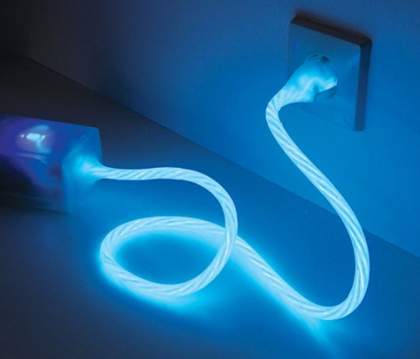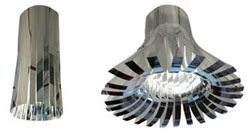In my previous post I told you about my work on a new approach based on learning algorithms to performing approximate life cycle assessment during the early stages of product development cycles. Now let’s go beyond ecodesign focusing on technical and engineering variables (e.g. use of life cycle assessment, materials optimization, design for disassembly and recycling) and look into different product design strategies addressing the other side of the equation – sustainable consumption.
Today’s patterns of consumption are increasingly offsetting the eco-efficiency created by clean production and ecodesign. Given a growing population with increased quality-of-life expectations, achieving sustainable development will require addressing and changing both production and consumption patterns. Indeed, sustainable consumption has been addressed by a number of United Nations and international agencies and governmental and non-governmental organizations. The goals have been to improve understanding of global consumption patterns and their environmental and social impacts, develop policies and programs to change unsustainable consumption patterns, and promote sustainable and equitable consumption for human development.
If you’re looking for a good introductory overview of thinking and action on issues of sustainable consumption, try Sustainable Consumption: Global Status Report 2002, UNEP, by Chris Ryan, RMIT University, Melbourne, Australia, and the International Institute for Industrial Environmental Economics, Lund University, Sweden, produced for the UNEP Division of Technology, Industry and Environment.
Transforming design approaches, products and services has been part of the thinking and action addressing sustainable consumption. The history of product design has shown us that designed products have played an increasingly important role in shaping users’ awareness, desires and behaviors. How can this role be further leveraged to influence users towards sustainable consumption? Here are some avenues I’ve been looking into:
Sustainable consumption by participatory ecodesign
What are appropriate strategies and tools that help design teams create users’ ‘sustainability demand’ and integrate their participation and creativity in the ecodesign process?
Sustainability is not achievable with today’s consolidated strategies and behaviors. It will require “jumps” to radically new systems of production and consumption and changes in industry, government and society1. Chris Ryan proposes the EcoLab2, “a paradigm creator to help our under-resourced and locked-in industry venture into hitherto unthinkable territory”. I further argue that EcoLab’s eco-innovation in “step-changes” can become more powerful and make more of an impact with “participatory eco-design” – by actively involving users (e.g. domestic consumers, business-to-business buyers and government purchasers) who are normally outside the design process. Inspired by this trend in design, referred to by Anton Andrews and Marco Bevolo (Philips Design) as “co-creative, participatory design”3, I believe that “co-creative, participatory ecodesign” could better capture each user’s needs, values and socio-cultural context, and therefore truly engage them towards creating, promoting and demanding new sustainable systems of production and consumption.
Sustainable consumption by user interaction
How can product design drive sustainable consumption through user interaction, by intuitively communicating sustainability values in the way products are used?
Raising users’ awareness can ultimately influence sustainable behavior and consumption4. There’s an emergent body of research and experimentation looking into using product design to influence sustainability awareness and related consumption behaviors.
One example I find inspiring focuses on the user’s interaction and the visual representation of consequences of personal energy consumption when using the product. It’s the Power-Aware Cord5, created by the Swedish STATIC! project among other energy awareness new devices. The ‘Power-Aware Cord’ is a re-designed electrical power strip that represents electricity consumption through glowing pulses, flow, and light intensity. Electroluminescent wires are shaped into a transparent electrical cord and produce dynamic patterns of glowing and pulsating colors to indicate the level of energy being used at a given moment. The intent is to inspire consumers to explore and reflect upon the energy consumption of electrical devices in their home. It’s now commercially available in Europe!

Other favorites by Static! include an Erratic Radio that ‘untunes’ when there are too many appliances in the room consuming energy, and the Flower Lamp that rewards energy behaviors with form changes - the lamp “blooms” when energy consumption has been low for some time: a change in behavior is required “to make the lamp more beautiful”.

Joana Hipólito from the New University of Lisbon, Portugal, has been experimenting with and developing new concepts and techniques in non-traditional pervasive computing to create interactive products that inspire people to become more environmentally aware and responsible. She’s been working on the Wall Illuminated Light Switcher Tool6 to promote energy conservation behavior in an intuitive way through visual or sonic representations of consumption time or energy quantity. Tracy Bahmra and colleagues from Loughborough University in the UK focused on identifying, evaluating and applying design approaches to reduce ‘undesirable behavior’ in the use of mobile phones. They both presented at the Changing the Change design conference held in July in Torino, Italy. Check out their abstracts.
For too long we’ve been hearing about the ‘vicious cycle’ that modern societies have created, encouraged by planned obsolescence and resulting in unsustainable consumption patterns. Isn’t it possible that design approaches and products like those I’ve presented, powered by new forms of collaboration and creativity and raising a growing awareness of sustainability, can begin to create a compelling ‘virtuous cycle?’ Or, in fact, that it’s happening already?
I would love to learn more and hear from those who have been exploring these and other ideas! Please add your comments below.
References
- Ryan, C. (2002). EcoLab, Part I – A Jump toward Sustainability. Journal of Industrial Ecology 5(3): 9-12.
- Ryan, C. (2002). EcoLab, Part II – Learning from the Information Technology Revolution. Journal of Industrial Ecology 5(4): 6-9.
- Andrews, A. & Bevolo, M. (2004). Understanding Digital Futures. Design Management Review, Winter 2004: 50-57.
- Velden, R. V. d. (2003). Using Awareness in Product Design to Influence Sustainable Behaviour, Department of Product Design, Norwegian University of Science and Technology, Norway.
- Gustafsson, A. & Gyllenswärd, M. (2005). The Power-Aware Cord: Energy Awareness through Ambient Information Display. Ext. Abstracts CHI 2005, ACM Press, 1423-1426.
- Hipólito, J. (2008). Designing Environmental Behavior Sensorial Feedback Tools. Proceedings of Persuasive 2008 – Third International Conference on Persuasive Technology, June 4-6, Oulu – Finland.
Images: